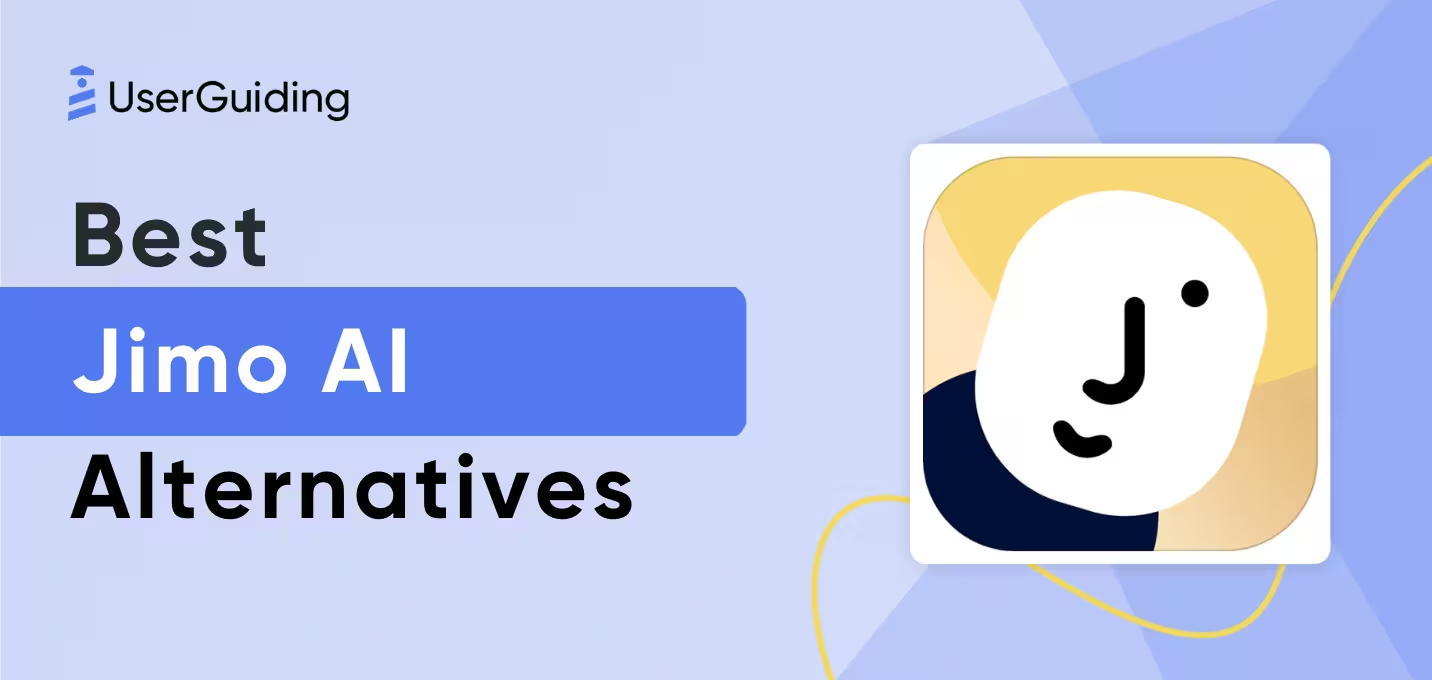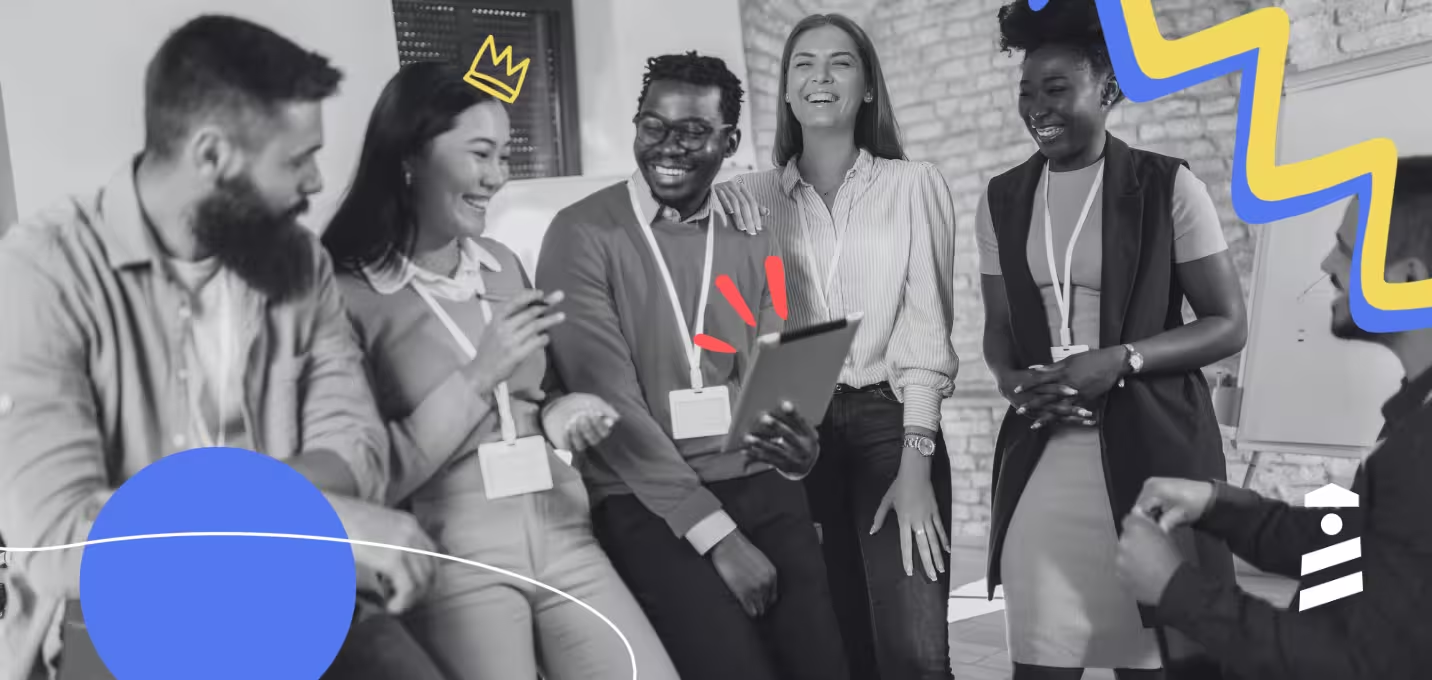

Ever wondered what the secret sauce is to keeping your customers hooked for the long haul?
According to Leila Hormozi, in her podcast Build With Leila Hormozi episode "How to Keep Every Customer," it all starts with one thing: customer activation.

Yep, it’s that important.
So, what’s customer activation?
Think of it as the moment where the magic happens—the very first time your customer experiences the value your product promises.
For example, let’s say you run a B2B marketing agency.
Your customer’s activation point might be when they see their first batch of fresh, quality leads rolling in.
If you’re in SaaS, it’s probably that moment when they log in for the first time, and bam—their shiny new dashboard is filled with insights.
Selling physical products? Customer activation could be as simple as that oh-so-satisfying moment when your package lands in their hands, ready to use.
🎯Leila calls this the number-one principle for keeping customers forever, and honestly, it makes sense.
When you truly get what makes your customers feel that first spark, you’re setting the stage for stronger engagement and, ultimately, long-term loyalty.
💥And that’s what this article is all about—showing you 15 inspiring examples of customer activation that not only boost engagement but also help you keep those customers keep coming back for more.
And we’ll be looking at some not-so-great examples as well, buckle up!
TL;DR
- Customer activation is all about getting users to experience a product’s value as quickly as possible.
- Strong activation strategies boost engagement, retention, and long-term growth.
- Great examples include Grammarly, Typeform, and Figma, which immediately showcase their value with hands-on experiences.
- Poor activation can lead to failure—just look at Snapchat’s redesign, Windows 8’s confusing UI, and Quibi’s short-lived streaming service.
- Instant feedback, smooth onboarding, and clear value are key to successful activation.
- Overcomplicated processes, lack of user guidance, and weak first impressions can drive users away.
- The best activation strategies focus on seamless integration, intuitive design, and solving real user pain points fast.
- Nail activation, and you’re one step closer to turning new users into loyal customers! 🚀
15 Great Customer Activation Examples (And 3 That Aren’t So Great)
1- Slack’s Way of Onboarding
Let’s talk Slack first.

Slack’s onboarding is a masterclass in simplicity and charm. No surprises there.
From the moment you sign up, it’s like Slack knows you’re busy and doesn’t want to waste your time. 👩🏽💻
You start by naming your workspace—simple enough—and then get guided tips through in-app messages that highlight just what you need to know at the start.

Features like channels, threads, and integrations are introduced step by step.
Plus, the cheerful tone (like, “What’s your team working on today?” or “You’re doing great!”) makes the experience feel less like work and more like a conversation with a super-friendly coworker. 🤩

🚀It’s the kind of activation that just works—and it ties right back to what Leila Hormozi emphasized in Build With Leila Hormozi.
We’ve talked about this before: activation isn’t just about showing features; it’s about making users feel the value immediately.
Slack does this effortlessly by nudging users to take small but meaningful actions, keeping them engaged from the start.🎯
✅ What’s good in this example?
Personalization: Slack tailors its onboarding to what you input.
For example, if you say your team is focused on “project management,” it subtly nudges you toward setting up channels and integrating tools like Trello or Asana.
Microcopy: The little phrases throughout the flow (like “Nice job!” or “Almost there!”) feel personal and friendly, which keeps you motivated to explore the platform.
Quick wins: They let you achieve small victories right away—like sending a message or inviting a teammate—so you feel productive within the first five minutes. We’ll get back to this with Duolingo later on.🤩
❌ What’s not really good in this example?
Surface-level exploration: If you’re already a Slack pro or part of a larger business with complex needs, the onboarding might feel too basic. It doesn’t dive into more advanced features like workflows or using Slack APIs for automation.
2- Trello’s First-Board Activation Journey

Next up is Trello.
Let me tell you about my experience trying Trello for the first time—it felt like unwrapping a new iPhone you’ve been dying to play with.🫣
When you sign up, Trello doesn’t just throw you into a blank canvas and say, “Figure it out.”
Instead, they give you a pre-filled sample board that’s already decked out with cards, lists, and even a few labels.
It’s like a ready-made workspace, and you’re instantly like, “Ohhh, this is how it works.”
They guide you step by step with a video, too—move a card, add a label, drag something around, and you’re already feeling like a productivity pro.

It’s simple, visual, and hands-on. You’re not just reading instructions; you’re doing it in real time, and that’s what makes the whole experience ✨click.✨
✅ What’s good in this example?
Hands-on learning: The best part? You actually get what Trello is about within minutes. Adding cards or shifting them around feels so natural, and it’s like, “Hey, I can totally organize my entire life with this thing.”
Minimal friction: No setup hassle here. You don’t need to name your board, design workflows, or overthink anything. You just jump in and start tweaking the pre-made board like you’ve been using Trello for years.
Instant “aha” moment: That pre-filled board is a genius move—it gives you a clear example of what’s possible without overwhelming you with blank space.
❌ What’s not really good in this example?
Open-ended possibilities: As much as I loved the first steps, the whole “blank canvas” vibe hit me later when I started building my own boards.
The moment you close that sample board, you’re on your own, and that endless flexibility can feel intimidating. Like, “Should I organize by project, by priority, or… by what’s stressing me out most?”
3- Canva’s Template Library for Quick Wins

Alright, Canva’s onboarding?
Absolute gold for anyone who’s ever felt creatively meh. 😟
The moment you sign up, Canva swoops in with this treasure chest of templates—social media posts, flyers, business cards—you name it. The ‘’activation’’ moment, all the value, is right there where you reach it.✨

It’s not like they just dump them in your lap, though. They actually ask what you’re here for first.
Are you a small biz owner? A student? Someone just trying to make a cute birthday invite?
Based on your answers, they show you a curated lineup of templates that feel almost too perfect, like they’re reading your mind.
What makes it even better is how easy it is to customize anything.
💥You pick a template, swap out the text, throw in your logo or photos, and boom—you’ve got something that looks like you hired a pro designer.
And trust me, you can do all of this in under five minutes, even if your tech skills max out at sending GIFs in a group chat.
✅ What’s good in this example?
Instant value: Canva doesn’t waste your time. You sign up, and within seconds, you’re working on something tangible. That “first win” happens so fast, and it’s a confidence boost because you’re like, “Wow, I made this?!”
AI-driven personalization: The recommendations feel super tailored.
For example, if you pick “social media,” you’re getting Instagram post templates that are trending right now. It’s not some generic list—it actually feels relevant to your goals.
Accessible for all skill levels: Canva’s drag-and-drop editor and easy customization make you feel like a design genius, even if you’ve never used anything more complex than Paint.😉
❌ What’s not really good in this example?
No deep-dive for advanced features: Sure, Canva’s great for beginners, but once you start wanting more—like creating animations, setting up brand kits, or using advanced effects—you’re left to figure it out on your own.
There’s no clear “Hey, here’s how you level up your design game” moment in the onboarding.
4- Asana

Asana’s value delivery is pretty slick if you’re all about collaboration right from the start.
Here’s how it goes: you sign up, and right away, Asana nudges you to assign tasks to your teammates.
It doesn’t waste any time on fluff. Instead, it gets straight to the heart of what the tool is all about: teamwork.
You’re immediately prompted to set up tasks, assign them to specific people, and even set deadlines.
👩🏽💻It feels super intuitive and makes you realize, “Ahh, this is how I’ll get my team organized.”
This quick dive into task assignment is designed to get you hooked on how you’ll work with others in the app.
And for those of us who are fans of productivity, it feels pretty satisfying to start seeing that task list take shape. Plus, if you’re working with a team, this makes everything click even faster.
✅ What’s good in this example?
Focus on teamwork: Asana doesn’t just show you how to organize your tasks; it gets your whole team involved right off the bat.
By the time you are prompted to assign tasks, your whole team is encouraged to get on board and adopt the tool together. This team-based approach means everyone’s learning as they go, making the transition smoother.
Clear CTAs (Calls to Action): The nudges are straightforward, telling you exactly what to do next—“Assign this task” or “Set the due date.”
The simplicity means you can get to work right away without getting lost in too many options or unnecessary decisions.
Immediate sense of collaboration: You’re not just setting up tasks for yourself, which makes it feel more like a real project management tool from the get-go.
You’re interacting with the platform as you would in a real-world scenario.
❌ What’s not really good in this example?
Over-reliance on user initiative: Asana’s nudges assume you’re working in a team from the start.
For solo users or freelancers who are just looking to organize their personal tasks, the “assign tasks” feature might feel a bit… unnecessary.
You don’t always need to delegate, so this approach might disengage those who aren’t working with others.
5- Spotify

Spotify has a genius way of getting you hooked the minute you sign up, and it all starts with music.
As soon as you’re in, they ask you a few simple questions about your favorite artists and genres.
Then—boom!—you’re greeted with a custom playlist, something like “Discover Weekly,” which is essentially your personalized musical playground.
You don’t even have to think about what to listen to; Spotify has already done that for you.
And trust me, that first playlist feels like they get you—like, “Wow, how did they know I needed more indie rock in my life today?”
This personalized playlist is an instant win, it just sparks joy and a sense of connection with the platform.

No matter who you are, the music feels tailored to your taste, and you’re immediately ready to enjoy the app.
✅ What’s good in this example?
Instant gratification: You sign up, and within minutes, you’re getting real value—music—without needing to navigate through endless settings or tutorials.
It’s like the app already knows you.
Personalization: The playlists are based on your music preferences, so they’re super relevant right out of the gate.
This makes users feel like the app is not just a one-size-fits-all tool, but one that adapts to their tastes.
🚀In a recent blog article written by Asia Anderson, I read about Spotify’s customer retention strategy all broken down, and it honestly made me appreciate the app even more.
What stuck with me the most was how effortlessly Spotify makes itself a daily habit, literally mastering that ‘’personalization’’ bit.
Check this out:

Boosts engagement: The instant playlist makes it super tempting to keep exploring.
You’re not just passively scrolling through the app; you’re listening to something you actually want to hear, which sparks a deeper connection and motivates you to stick around.
❌ What’s not really good in this example?
New users might not fully understand how to tweak playlists: At first, you’re thrilled by the playlist, but what if you want to adjust it or build your own playlist later?
The learning curve isn’t steep, but it’s still there.
Some new users might feel a bit lost trying to figure out how to edit or create their own playlists initially.
6- Notion

Notion totally nails the activation within the onboarding experience with its pre-built templates.
When you first sign up, you’re greeted with a variety of templates for different use cases—think project management, note-taking, personal journaling, habit tracking, and more.
It’s like they’ve already done the hard work for you, so you can hit the ground running.
The beauty of this is that you don’t need to be a Notion expert to get started.
You can dive into any of these templates and start using the app with zero frustration.
Plus, once you get the hang of it, you can easily customize or create your own templates.
✅ What’s good in this example?
Reduces overwhelm: Starting with a blank canvas can be intimidating, especially with a powerful tool like Notion.
These templates make it easy for new users to jump in without feeling lost, which can help reduce the initial onboarding friction.
Easy to adapt: Even if you’re new to the app, you’re not just stuck with a rigid template.
You can tweak and personalize them, which really encourages users to get their hands dirty, experiment and get creative with their workflow.
❌ What’s not really good in this example?
Too much choice can confuse users who don’t know where to start: While options are great, they can sometimes be a bit overwhelming. 😭
If you’re completely new to Notion and don’t know exactly what you need, having so many templates to choose from might leave you wondering, “Which one should I pick?”
It’s like being a kid in a candy store but not knowing what to try first. We’ve all been there.
7- Duolingo’s Gamification of Language Learning

Duolingo is basically that one friend who really wants to make sure you stick to your New Year’s resolution of learning a new language.
From the moment you start, it hooks you with a super playful interface, XP points, streaks, and even badges—so learning feels less like studying and more like leveling up in a game.
Instead of just throwing grammar rules at you, it makes you tap words, match sentences, and even speak into your phone (which feels a little weird at first, but you get used to it).
And let’s talk about that streak.
If you’ve ever played Duolingo, you know the undeniable urge to open the app at 11:59 PM just to keep your streak alive.

It’s like your digital pet—you have to feed it every day. Duolingo also sends those hilariously passive-aggressive notifications like “We’re sad you’re not learning today… but it’s okay. We’ll wait.” (No pressure, right?)

Plus, the app gets extra bonus points for the leaderboard feature, where you can compete with friends (or random strangers) to see who’s the ultimate language-learning champion.
Nothing like a little friendly competition to keep you on your toes.
✅ What’s good in this example?
Gamification makes learning addictive: Duolingo does an incredible job of turning language learning into a game.
You get XP points, unlock achievements, and even get “gems” to spend in the app (even if you have no idea what to do with them). This whole setup tricks your brain into wanting to come back every day, just like a mobile game.
🖐🏻I recently listened to the Behind the Product: Duolingo Streaks podcast episode featuring Jackson Shuttleworth, and it was such an eye-opener.

It breaks down how something as simple as a streak system can become a powerful driver of customer activation and retention.
What really stuck with me was how Duolingo doesn’t just use streaks as a gamification tactic but as a psychological nudge that keeps users coming back.
The way they’ve fine-tuned rewards, notifications, and social aspects to make learning feel addictive is seriously impressive.
🤌🏼It’s a great listen for anyone interested in how tiny design choices can have a massive impact on user activation.
Instant feedback and motivation: The little animations, sounds, and progress bars make sure you see your achievements in real-time. That “ding” when you get an answer right? Chef’s kiss. It’s oddly satisfying and keeps you going.
❌ What’s not really good in this example?
Streak pressure can backfire: If you’ve ever lost a 100-day streak, you know the heartbreak.
Duolingo makes it feel like the end of the world, and for some users, this kind of pressure is more discouraging than motivating. Instead of feeling proud, you just feel guilty (and maybe even a little resentful toward that smug little owl).
8- Miro’s Collaborative Whiteboard Demo

Miro absolutely nails customer activation by guiding you to take the meaningful first steps:
✅ Choose a template (brainstorming, flowcharts, project planning—whatever fits your needs).

✅ Start adding sticky notes, shapes, or drawings.
✅ Most importantly, invite your team to collaborate.
This last step is where Miro’s activation really shines.
It doesn’t just suggest it—it makes collaboration the default behavior.
You’re constantly nudged to bring teammates in, and once they’re in, the real-time interaction makes it clear why Miro is so powerful. It’s not just a whiteboard—it’s a shared workspace that comes to life when multiple people are using it.
✅ What’s good in this example?
Guided first actions: Instead of overwhelming users with endless features, Miro encourages a hands-on, structured approach—pick a template, add content, invite teammates.
This ensures new users immediately experience the core value of the tool.
Low friction, high reward: No complex setup or long tutorials—just click, create, and collaborate. This makes activation fast and engaging.
❌ What’s not really good in this example?
Requires team buy-in: If you’re exploring Miro solo, the activation journey feels a bit incomplete. The tool’s real value only fully clicks when you use it with others, so if you don’t have a team to invite right away, you might not feel the magic immediately.
9- Airtable

Airtable takes a slightly different approach to customer activation by delivering value through education rather than immediate hands-on engagement.
Instead of throwing you into the deep end, Airtable’s onboarding journey is packed with bite-sized video tutorials that land in your inbox and appear within the app.
Here’s how the activation flow works:
✅ You sign up and get an introductory email with a quick-start video on setting up your first database.
✅ The platform suggests relevant tutorials based on what you’re trying to achieve (like automations, formulas, or team collaboration).
✅ Videos walk you through real use cases, making Airtable’s flexibility less intimidating for first-time users.
The idea? Instead of just showing users what Airtable can do, they ensure you learn how to make it work for you.
✅ What’s good in this example?
Multi-channel onboarding: Airtable doesn’t rely on a single activation channel.
They mix in-app prompts with email sequences, ensuring users get multiple nudges to explore the product.
Reduces friction: Let’s be real—Airtable can be a bit intimidating at first.
The videos break down complex features in an easy-to-digest way, helping users grasp key concepts faster.
❌ What’s not really good in this example?
Passive activation: Watching videos isn’t the same as doing.
If users skip the tutorials (which many do), they might miss out on core activation moments.
10- HubSpot’s Free Tool Incentives

HubSpot plays the long game when it comes to activation. Instead of pushing users to commit immediately, they ease them in with free tools like their CRM, email signature generator, and marketing templates.
The strategy?
Give users a taste of value before nudging them toward the full suite of HubSpot products.
It goes as follows:
✅ A user lands on HubSpot looking for a specific free tool (say, the email signature generator).
✅ They use the tool without signing up—but to save or customize, they need to create an account.

✅ Once inside, HubSpot gently introduces other free features, like the CRM or email automation tools, showing how everything connects.
✅ Over time, users start exploring more functionalities, naturally leading into paid features.
HubSpot’s activation is built on familiarity and trust—they hook users with simple, free tools and slowly expand their involvement in the ecosystem.
✅ What’s good in this example?
Low barrier to entry: Free tools make activation effortless.
Users engage with value before committing to the broader platform.
Gradual upsell: Instead of pushing premium plans right away, HubSpot lets users discover paid features organically as they keep exploring.
❌ What’s not really good in this example?
Cross-selling overload: While HubSpot’s free tools are great, their constant follow-ups and upsell emails can feel a bit too much.
Some users may disengage if they feel bombarded.
Feature overwhelm: The ecosystem is huge, and users who sign up for a simple free tool might feel lost when introduced to too many options at once.
A more personalized onboarding journey could help with this.
11- Calendly

Calendly keeps activation short and sweet—no fluff, no unnecessary steps.
The moment you sign up, you’re prompted to connect your calendar (Google, Outlook, whatever you use) and set your availability.
Within minutes, you have a personalized booking link ready to share.

This approach makes friction go away and ensures that users see value instantly.
There’s no waiting, no confusion—just a clear, guided setup that gets you booking meetings right away.
Here’s the activation flow that I absolutely love:
✅ You sign up and immediately get asked to connect your calendar.
✅ Calendly automatically syncs your availability—no manual setup needed here.
✅ You get a booking link and are encouraged to share it with others.
✅ A quick walkthrough shows you how to customize meeting types and adjust preferences.
By the time you leave the onboarding flow, you’re already using the product.
That’s just great activation in action.
✅ What’s good in this example?
Straightforward setup: No unnecessary steps—Calendly gets you to the Aha! moment fast by showing instant value.
Smooth integration: Syncing with Google Calendar, Outlook, and other tools is effortless, making adoption seamless.
Immediate utility: You don’t just explore the product—you actively use it right after signing up.
❌ What’s not really good in this example?
Limited guidance for advanced customization: While basic setup is seamless, users who want to fine-tune settings (e.g., custom meeting buffers, multiple event types) don’t get much guidance upfront.
12- Loom

Loom takes activation beyond just a product tour—it makes the experience personal.
Right after signing up, you get a friendly welcome video from the Loom team, walking you through the basics: how to record, edit, and share a video.

It’s not a boring, generic tutorial—it feels like a real person is talking to you.
This small but impactful touch builds trust and makes the tool feel easy to use right from the start.
Later on:
✅ You sign up and immediately see a short, personalized video from the Loom team.
✅ The video walks you through how to record your first video in seconds.
✅ A clear CTA encourages you to record a quick test video.
✅ You get suggestions on how to share and collaborate with teammates.
✅ What’s good in this example?
Human touch: Unlike static guides, a welcome video adds warmth and makes users feel like they’re being personally guided.
Quick demo: The hands-on walkthrough immediately shows users how to record and share videos, reducing any learning curve.
Encourages first action: Instead of passively watching, users are nudged to record their own video right away—leading to faster activation.
13- Typeform

Typeform doesn’t just tell you what it does—it lets you experience it firsthand. Right after signing up, you’re invited to test an interactive form, submit responses, and see how data flows in real-time.

This activation approach makes users feel like they’re already using the tool before they’ve even created their first form. The experience is smooth, engaging, and visually appealing—just like the product itself.
✅ You sign up and immediately interact with a sample Typeform.
✅ The preview demonstrates how responses are collected and visualized.
✅ A clear CTA nudges you to customize your own form.
✅ The intuitive interface guides you through creating a form in minutes.
By the end of this process, users aren’t just aware of Typeform’s capabilities—they’ve already seen the results in action.
✅ What’s good in this example?
Interactive experience: Instead of passive learning, users get hands-on exposure to how Typeform works. I just love this part.
Results-oriented: Users don’t just build a form—they see how responses are captured and turned into actionable insights.
Immediate value: Right from onboarding, users experience the power of well-designed, engaging forms.
❌ What’s not really good in this example?
Extra guidance needed for advanced users: While the interactive preview is great for beginners, users looking for advanced customization (like logic jumps, integrations, or custom branding) might need a more in-depth walkthrough.
14- Figma

Figma gets activation. It just gets it.
It throws you right into the action—start a project, invite teammates, and see the brilliant impact of real-time collaboration.
No long tutorials, no unnecessary friction. Great educational content.
Just an instant ‘’Aha’’ moment when you watch a teammate edit a design at the same time as you.
It’s activation done right—fast, hands-on, and impossible to ignore.
If you’re using it solo, though, that first spark might take a little longer to catch. But for teams? It’s love at first edit.
✅ What’s good in this example?
Seamless collaboration: You get to experience Figma’s real-time editing magic instantly, which makes your teamwork feel effortless from the start.
Hands-on activation: Instead of just reading about features, you get to dive right into a project, learning by doing.
Encourages team adoption: By prompting you to invite collaborators early, Figma ensures the product spreads naturally within teams.
❌ What’s not really good in this example?
Less intuitive for solo users: Without teammates to collaborate with, the core value of real-time design can feel less immediate.
Feature overload risk: New users might get lost in the many tools and customization options before grasping the basics.
No guided structure: While freedom is great, some users might benefit from a more structured first experience instead of figuring things out on their own.
15- Grammarly’s Writing Assistant

I saved one of my favorites for last— Grammarly’s Writing Assistant.
From the moment I start using it, Grammarly makes sure I see the value right away.
As soon as I type, the AI-powered assistant jumps in with real-time suggestions, helping me improve clarity, grammar, and tone.
No need to figure things out on my own—the product shows me what it can do instead of just telling me.
I found this great article on Breadcrumbs.io that breaks down how Grammarly gets users hooked right from the start.
It mainly talks about Grammarly’s strategies in the activation phase, emphasizing how the platform ensures users quickly experience its value proposition, which leads to, you know, higher engagement and retention rates.✨
✅ What’s good in this example?
Instant results: No waiting, no setup hassle—just start writing and immediately see Grammarly in action.
Simple integration: Whether you’re drafting an email, writing on Google Docs, or posting on social media, Grammarly follows you everywhere.
Subtle but effective nudges: The way Grammarly highlights mistakes and offers quick fixes makes it almost addictive to use.
❌ What’s not really good in this example?
Over-reliance on freemium: The free version is great, but some of the best features—like advanced tone adjustments and plagiarism detection—are locked behind a paywall.
Sometimes too aggressive: If you’ve ever tried writing in a more casual tone, you might find Grammarly pushing you toward a more formal style than you intended.
Still, as far as activation goes, Grammarly nails it. It gives users an instant win by improving their writing from the first keystroke, making it hard to imagine working without it.
And isn’t that exactly what great activation should do?
3 Poor Customer Activation Examples That (Most Likely) Won’t Grow Engagement
Not all activation strategies are created equal. 🤔
Sometimes, even well-meaning efforts can backfire and drive users away. 😟
Let’s look at a few examples of bad activation strategies, break down why they don’t work, and highlight lessons you can learn to avoid these pitfalls, friends.
1. Snapchat’s Redesign Backlash

In 2018, Snapchat introduced a major redesign aiming to make the app more user-friendly.
However, the changes were met with significant user dissatisfaction.
The new interface was confusing, and many loyal users felt alienated.
This led to a decline in user engagement and a public apology from the company.😔
What went wrong?
Lack of User-Centric Design: The redesign did not align with user preferences, and this ultimately led to confusion and frustration.
Insufficient User Feedback: The company failed to gather adequate user feedback before implementing the changes, resulting in a misalignment with user expectations.
2. Microsoft’s Windows 8 Launch

When Microsoft launched Windows 8 in 2012, it introduced a new tile-based interface, replacing the familiar Start menu.
This drastic change confused many users, especially those accustomed to previous versions, like myself.
The lack of a tutorial or guidance on how to navigate the new system led to frustration and slowed adoption rates.
What went wrong?
Abrupt Departure from Familiarity: The sudden shift to a new interface without gradual transition options left users disoriented.
Poor Onboarding Experience: The absence of effective onboarding materials or tutorials hindered users from understanding and adapting to the new system.
3. Quibi’s Short-Lived Streaming Service

Quibi, a short-form streaming platform launched in 2020, aimed to revolutionize mobile entertainment.
Despite significant investment and high-profile content, it struggled to attract and retain subscribers, leading to its shutdown within six months.
What went wrong?
Misjudged Market Demand: Quibi overestimated the demand for short-form, mobile-only content, failing to resonate with target audiences.
Limited Platform Availability: The service’s restriction to mobile devices excluded potential users who preferred viewing content on other platforms, limiting its reach.
Conclusion
Customer activation can make or break a product’s success, and these examples show just how important it is to get it right.
When your users instantly see value, they’re more likely to stick around.
But when activation is confusing, slow, or just doesn’t deliver, even the best products can struggle.
The key?
Make it seamless, engaging, and actually useful from day one.
Hopefully, these insights help you spot what works (and what doesn’t) so you can fine-tune your own activation strategies! 🚀
Frequently Asked Questions
What is customer activation?
Customer activation is the process of guiding new users to experience a product’s value as quickly as possible, encouraging engagement and long-term retention.
What is an example of an activation?
An example of activation is Spotify’s personalized onboarding, where new users get custom playlists based on their music preferences, instantly showcasing the platform’s value.

















.svg)
.svg)
.svg)
.svg)
.svg)

.svg)
.svg)












.svg)
.svg)




.png)
















